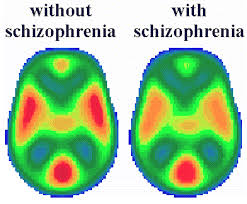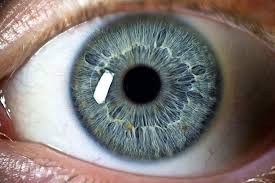Rehab Articles

Brain imaging holds the key to why healthy siblings of schizophrenia patients avoid this disorder. The researchers n the latest study have found important differences in brain development during adolescence between those with schizophrenia and siblings who are healthy and do not have this mental disorder. The study showed that the healthy siblings experienced brain abnormalities similar to their schizophrenic siblings, but in the brain of the healthy sibling the brain development normalized and caught up with the development of normal teens without any indication of schizophrenia. Researchers hope that the latest brain imaging results and findings could open up new treatment possibilities. A partnership between researchers from the National Institute of Mental Health in Washington, D.C and the University of Melbourne in Australia made the study possible.
The brain imaging schizophrenia study used magnetic resonance imaging (MRI) technology to map out the brain development and patterns of 109 individuals who developed childhood-onset schizophrenia between the age of 12 and 24 years old. According to University of Melbourne electrical engineer and lead researcher Dr. Andrew Zalesky “We’ve looked at the development of brain networks over the adolescent period, from childhood to early adulthood. Abnormalities detected early in the unaffected children normalize by age 16. So why are these brothers and sisters able to overcome the risk? Looking for these biological factors that protect a person from developing schizophrenia opens up a new direction in the search for treatments.” According to Melbourne Neuropsychiatry Centre at the University of Melbourne Dr. Christos Pantelis, a co-author of the recent research study, “New generation medications can help young patients manage their symptoms, but can have significant side effects. Our work has the potential to open up avenues towards earlier intervention with fewer side-effects that improve a child’s resilience to becoming ill. This is an interesting new direction, as it suggests the search for targeted psychiatric treatments for schizophrenia and psychosis requires following young people over time.”
Rehab Articles

Is an addiction to sexting becoming a big problem in North America? A new study shows that sexting is more common than what was previously thought, with more than 80% of the people who responded to online surveys admitted that they had engaged in sexting in the last year. The research behind these facts was presented at the 123rd Annual Convention for the American Psychological Association. The research was presented to the convention by Drexel University’s Emily Stasko, MS, MPH. Stasko explained that “Given the possible implications, both positive and negative, for sexual health, it is important to continue investigating the role sexting plays in current romantic and sexual relationships. This research indicates that sexting is a prevalent behavior that adults engage in for a variety of reasons. These findings show a robust relationship between sexting and sexual and relationship satisfaction.”
An addiction to sexting is possible, but this behavior can also play a role in healthy sexual relationships as well. The study involved 870 individuals who were between 18 and 82 years old. Researchers also discovered that many individuals who sexted more often had a higher satisfaction level and rating for their relationship when they were sending these messages to their significant other. When sexting occurs outside of a monogamous relationship it can be harmful to the relationship though. Many experts consider this activity as risky, although many people who engage in sexting view the activity as something fun and harmless. As this activity grows there well be more people who develop an addiction to this risk taking behavior and need treatment.
Rehab Articles

According to University of Illinois at Chicago researchers female depression is often linked to glutamate receptor genes which are overactive. A recent study showed that women who suffer from depression have rates of gene expression which are extremely high, and these abnormal levels occur in the genes which regulate the glutamate system in your brain and body. This is not the only mental or physical health condition that may be caused by glutamate system abnormalities either. In the past these abnormalities have been associated with or linked to epilepsy, Alzheimer’s, autism, schizophrenia, and other disorders. University of Illinois at Chicago pharmacy practice assistant professor Monsheel Sodhi, Ph.D explained the study conclusions and stated “Our data indicate that females with major depression who are at high risk of suicide may have the greatest antidepressant benefit from drugs that act on the glutamate system, such as ketamine.”
The study shows promise for new treatments for female depression which impact the activity of the glutamate receptor gene. According to Dr. Sodhi an overabundance of this neurotransmitter in the brain could explain why women are more likely to attempt suicide when they have female depression. The study results were published in the Molecular Psychiatry journal. The study researchers analyzed brain tissue samples that were recovered postmortem, from both sexes and from individual who both did and did not suffer from mental illness. Many of the individuals whose tissue was analyzed and who were depressed committed suicide. The tissue analysis showed that women who had female depression were more likely to have an overactive glutamate receptor gene.
Rehab Articles

Schizophrenia has been associated with eye movement impairment, and this fact has been known for decades. A new eye test may be able to identify those who are suffering from schizophrenia based on this impairment according to researchers who performed the study. In the study the researchers determines that the eye test accurately identified people who had schizophrenia more than 98% of the time. Lead paper authors for the study, Dr. Philip Benson and Dr. David St. Clair, reported that “It has been known for over a hundred years that individuals with psychotic illnesses have a variety of eye movement abnormalities, but until our study, using a novel battery of tests, no one thought the abnormalities were sensitive enough to be used as potential clinical diagnostic biomarkers.”
The eye test used in the schizophrenia study involved a series of tasks. These tasks included gaze fixation, smooth pursuit, and free viewing. People who have schizophrenia had difficult with the smooth pursuit task, and their eyes had trouble following moving objects. The eye tended to fall behind the object and then to use saccade, a form of REM, to catch back up with the object. The eyes of people with schizophrenia who were shown a picture in the free viewing test differed from the general population because their eyes tracked and followed an abnormal pattern compared with the those who do not have schizophrenia. The fixation tasks of the eye test were also revealing because individuals who have schizophrenia have difficulty holding their gaze steady on a fixed object that does not move.



